
Nine Tboli Women:
Discretion
Nine Tboli Women:
Discretion
2022
Autobiographical recollection, impression on cornstarch,
and installation
Karl Castro (concept, concept development and artwork creation), Delia Anggol, Madia Tuan, Maria Todi, Mining Layol, Neneng Tohol, Nenita Kinan, Nida Anggol, Terry Man and Uyel Anggol (autobiographical detail), Marian Pastor Roces (concept and concept development), Sara Rivera (concept development), Jenita Eko (research and tranlation) Paul Formaran and Maria Fe P. Quiroga (curatorial assistance and translation), Maricel Hilario-Patiño (project administration and anthropological insight), Andre Rafael Agonoy (woodwork), Lester Ibarbia (assitance), Arnold Diano, Archie Opeña, Jaypee Gotera, Agnes Nantiza and Noralen Johnson (installation)
Slightly earlier, missionaries of
the Passionist Order, notably the figure of
former priest Rex Mansmann,
established Sta. Cruz Mission.
Among its innovations on social order
was the creation for the Manila market of
the traditional weftikat-dyed tnalak cloth,
by women who hence led
their communities into the transition
to the cash economy.
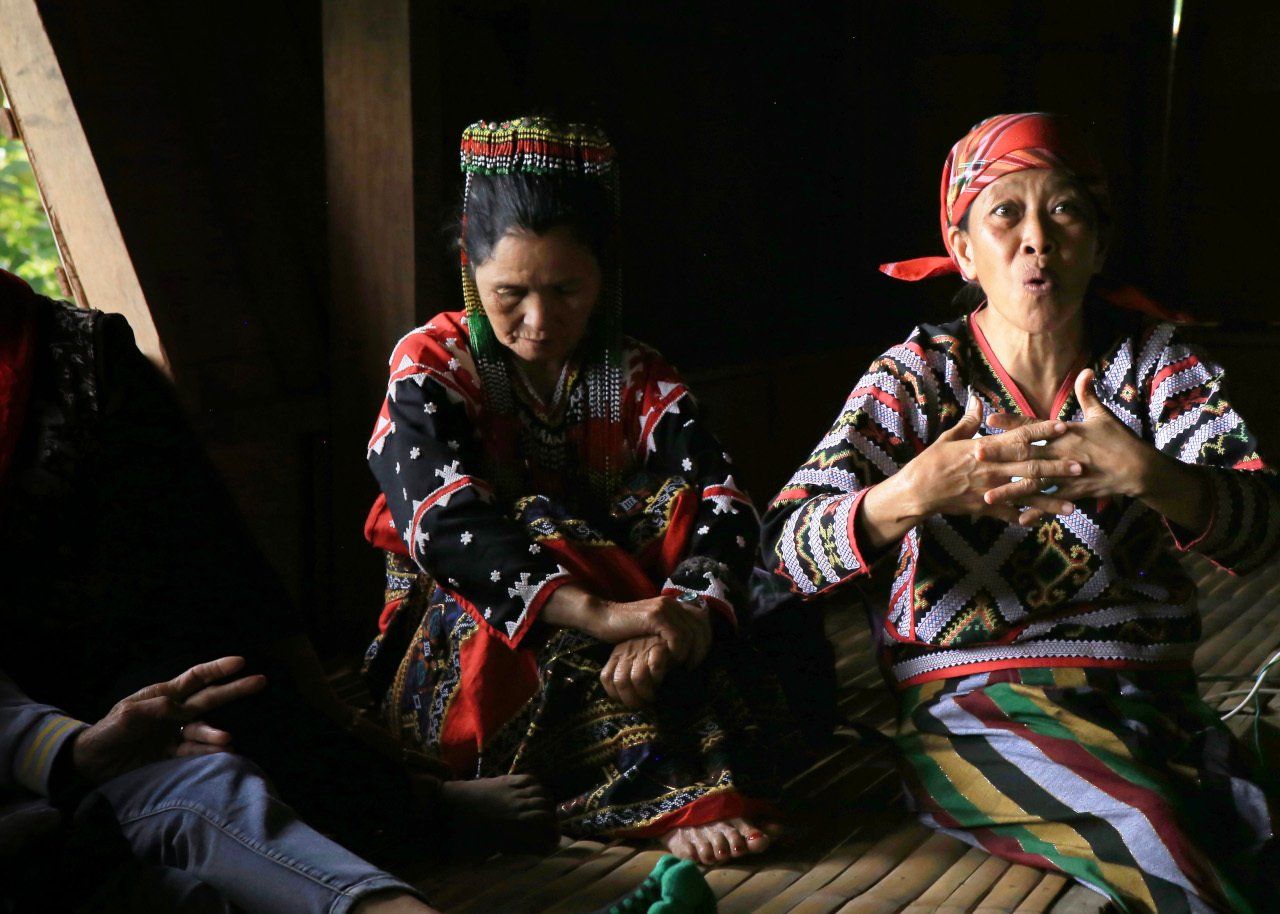
SAMA WOMEN AT A COMMUNITY MEETING WITH
THE RESEARCH TEAM IN MARIKI, ZAMBOANGA CITY.
The towns of Lake Sebu and Tboli
in what is now the province of
South Cotabato were formed during
a period—the same 1970s and
the years immediately before,
when Martial Law controls
were imposed on the entire nation.
These municipalities, incipient in
the 1960s, emerged from thick,
tropical rainforests penetrated by
a particular small set of
Christian missionaries and
Marcosian operatives. "Penetrated"
is used deliberately in this case.
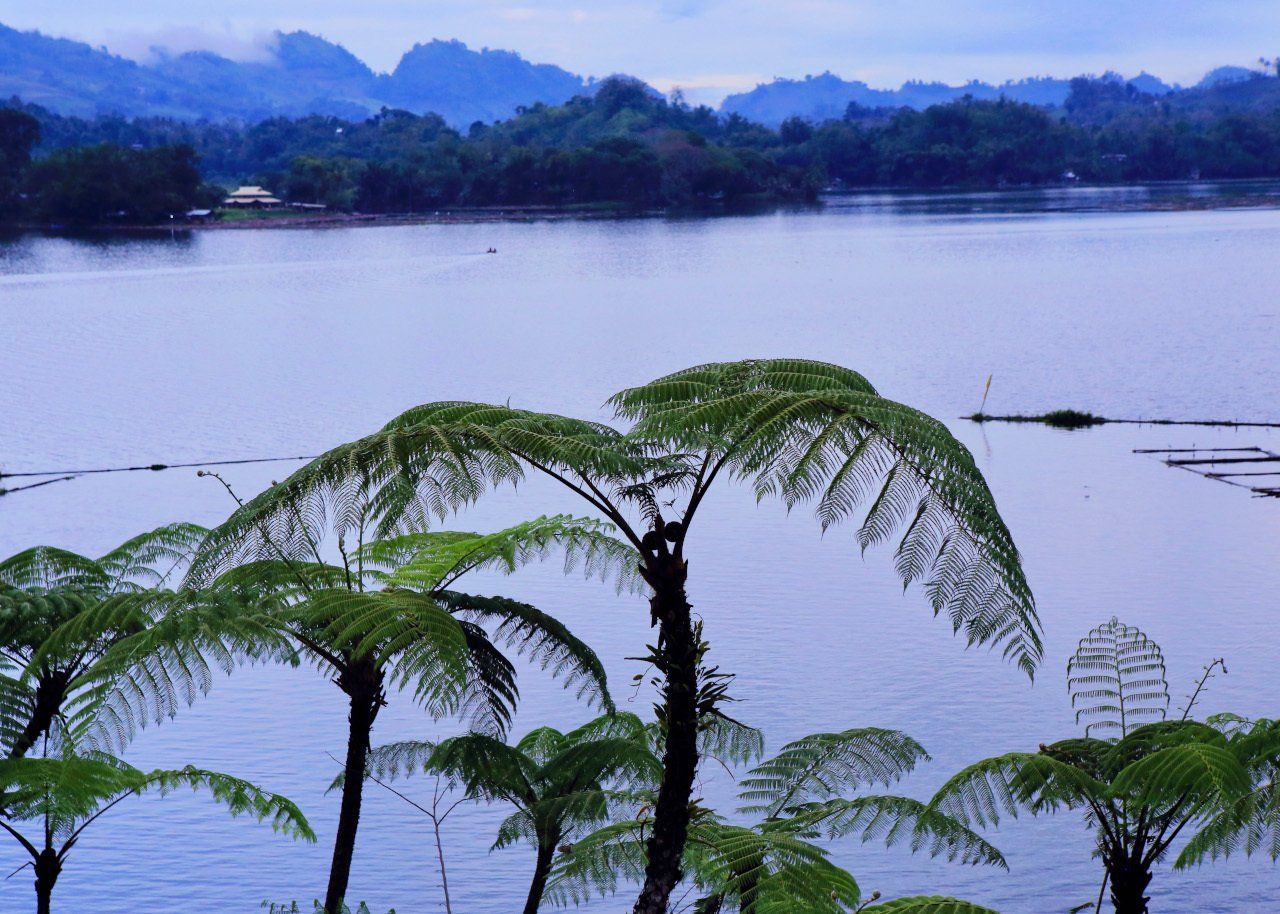
A VIEW OF LAKE SEBU IN SOUTH COTABATO.
THE MALE MACHISMO OF
THE THEN-ESTABLISHED PRESIDENTIAL
ASSISTANT ON NATIONAL MINORITIES
(PANAMIN) WAS SHARPLY DEFINED BY
THE PATRIARCHAL EXERCISE OF LARGESSE
TOWARDS A GROUP OF PEOPLE WHO
QUICKLY LEARNED TO TREAT ITS LEADER,
MANUEL (MANDA) ELIZALDE, JR.,
AS A GOD-LIKE PRESENCE AND FONT OF
GOODNESS AND RESOURCES.
Nine
Tboli
Women:
Discretion
Invisibilities
and seas: Grace
in the Sama islands
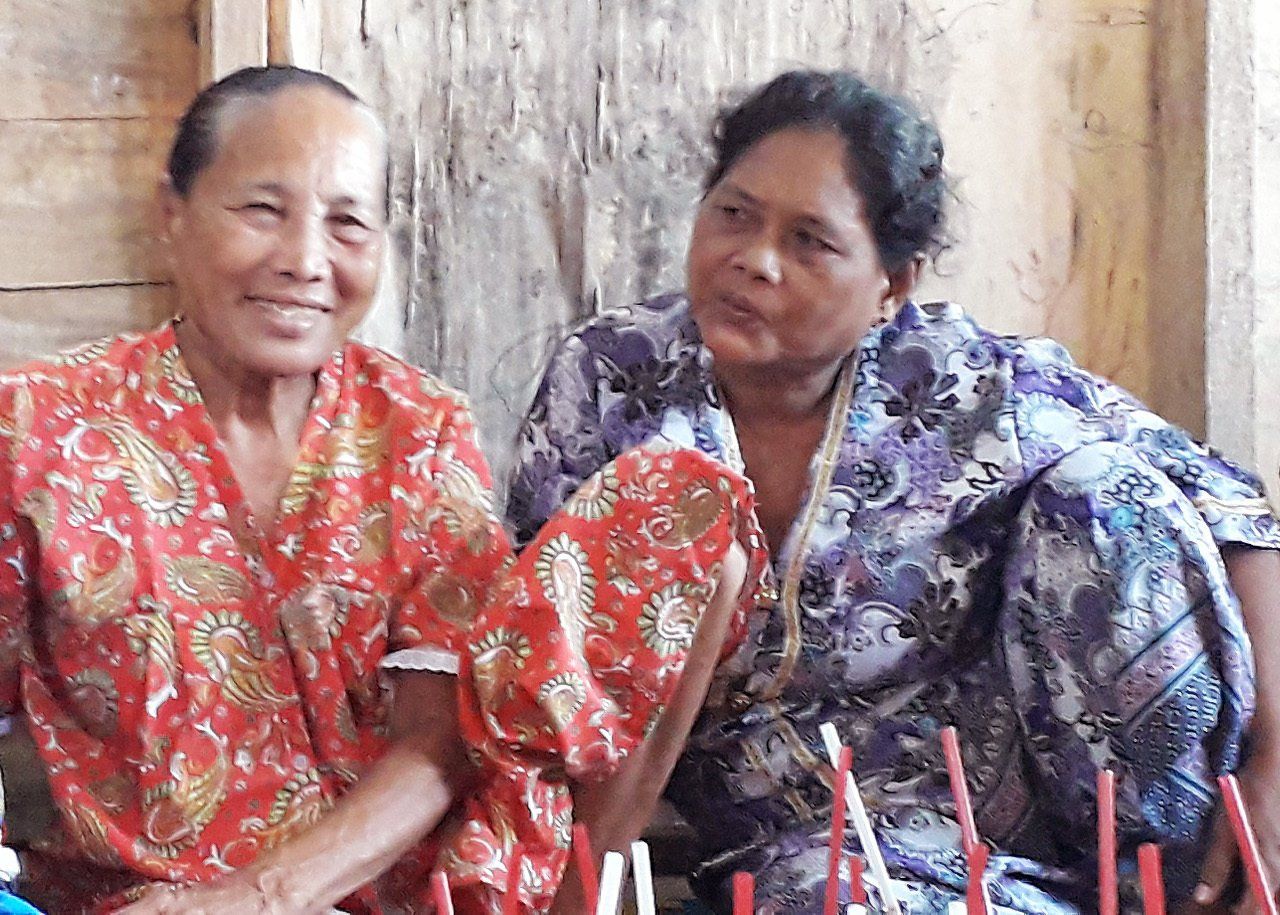
SAMA WOMEN AT A COMMUNITY MEETING WITH
THE RESEARCH TEAM IN MARIKI, ZAMBOANGA CITY.
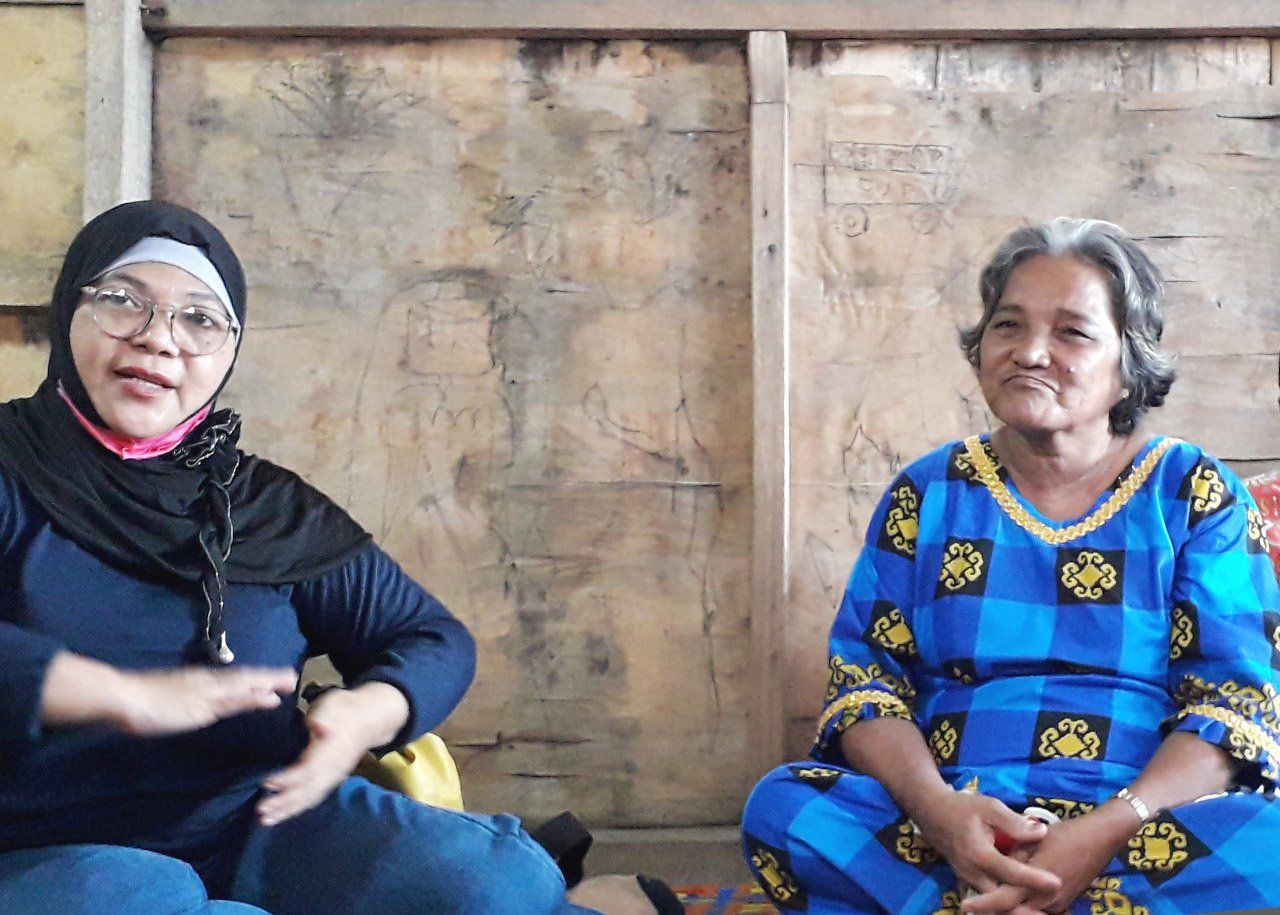
They also understand that the
dislocations experienced in Sulu
increased momentum during the
Martial Law period that brought
war to the archipelago.
THIS IDEAL OF UNITY EMERGES FROM A CULTIVATED SENSIBILITY THAT KEEPS FAITH WITH PRE-ISLAMIC AND ISLAMIC-ANIMIST RITUALS PRESIDING OVER LIFE AND DEATH
IN THE SULU ARCHIPELAGO.
The word grace describes
the will to life of the participating
men and women in this project,
who wish it understood that
their desire to uphold
the ritualized Samalan sea-oriented
life of the past is neither belligerent
nor divisive. They seek a "One Sulu"
inclusive of Tausug and
Sama peoples, despite
historical asymmetries of power
between the language groups.
THE PROJECT COLLABORATORS ARE ACUTELY AWARE THAT THE CONTINUED EXISTENCE OF
THESE RITUALS IS THREATENED
BY FUNDAMENTALIST STRAINS
OF ISLAM, MODERNISM, AND INDEED CHRISTIANITY.

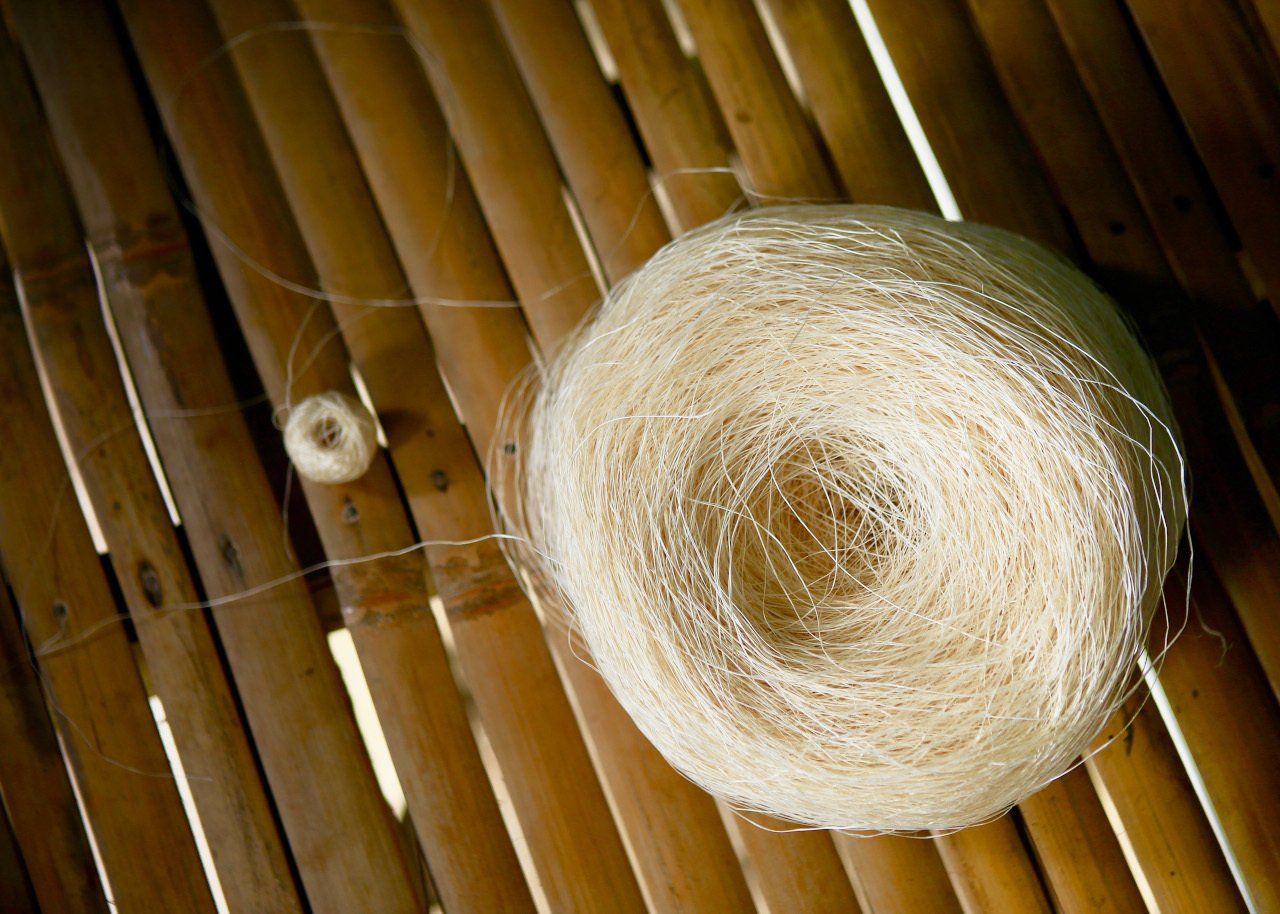

BALLED ABACA FIBER — BNOGO IN TBOLI — A RAW MATERIAL
IN MAKING THE IKAT-DYED CLOTH CALLED TNALAK.
MEETING THE TBOLI WOMEN TO INTRODUCE THE EXHIBITION PROJECT.
Mansmann, who has
many Tboli children
with different partners,
explains this conduct
via an embrace of
Tboli polygamy.
Elizalde's personification
of a beneficent
otherworldly being,
arriving by chopper
amidst the jungle and
departing via
the same bird,
brought patriarchy
to extreme levels.
IN THE HANDS OF
THESE RAVENOUS MALES—
OR IN THE VICINITY OF
THE IMPACT ZONE OF
THEIR CONTRASTING PRESENCE—
MANY TBOLI WOMEN
EXPERIENCED METAPHORIC OR
LITERAL SEXUAL PREDATION.
THE WOMEN WHOSE LIVES WERE OVERDETERMINED BY THE IMMENSE SUBTLY VIOLENT CHANGES
REPRESENTED BY THESE TWO MEN, SURVIVED WITH THEIR PERSONAE AND INDEED BAWDY HUMOR INTACT
In collaborating on an artwork
consisting of reproductions of
ikat warping frames for dyeing,
they tell their stories in a way that
reveals and conceals at the same time.
The ikat dyeing process itself is balance
of revealed and not revealed.
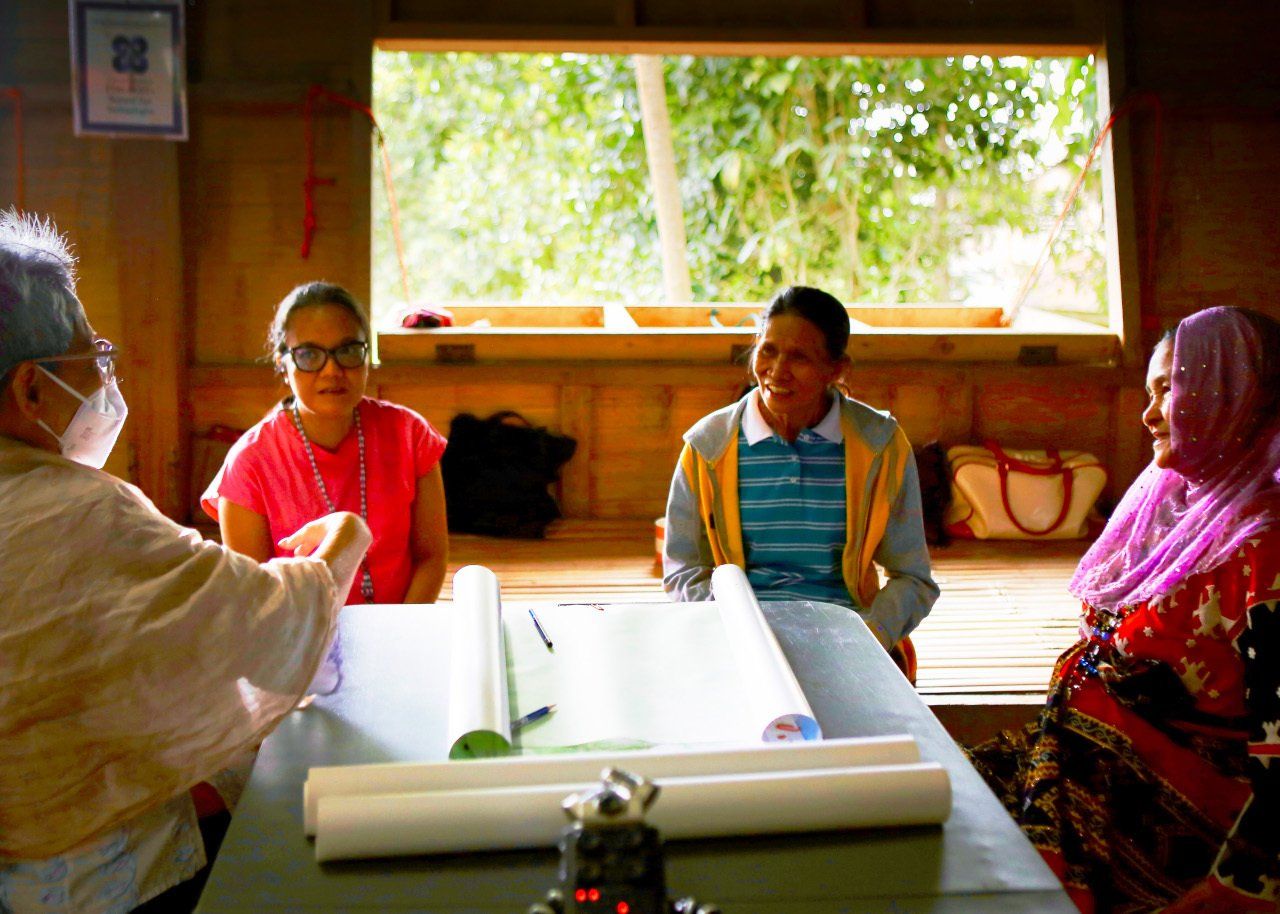
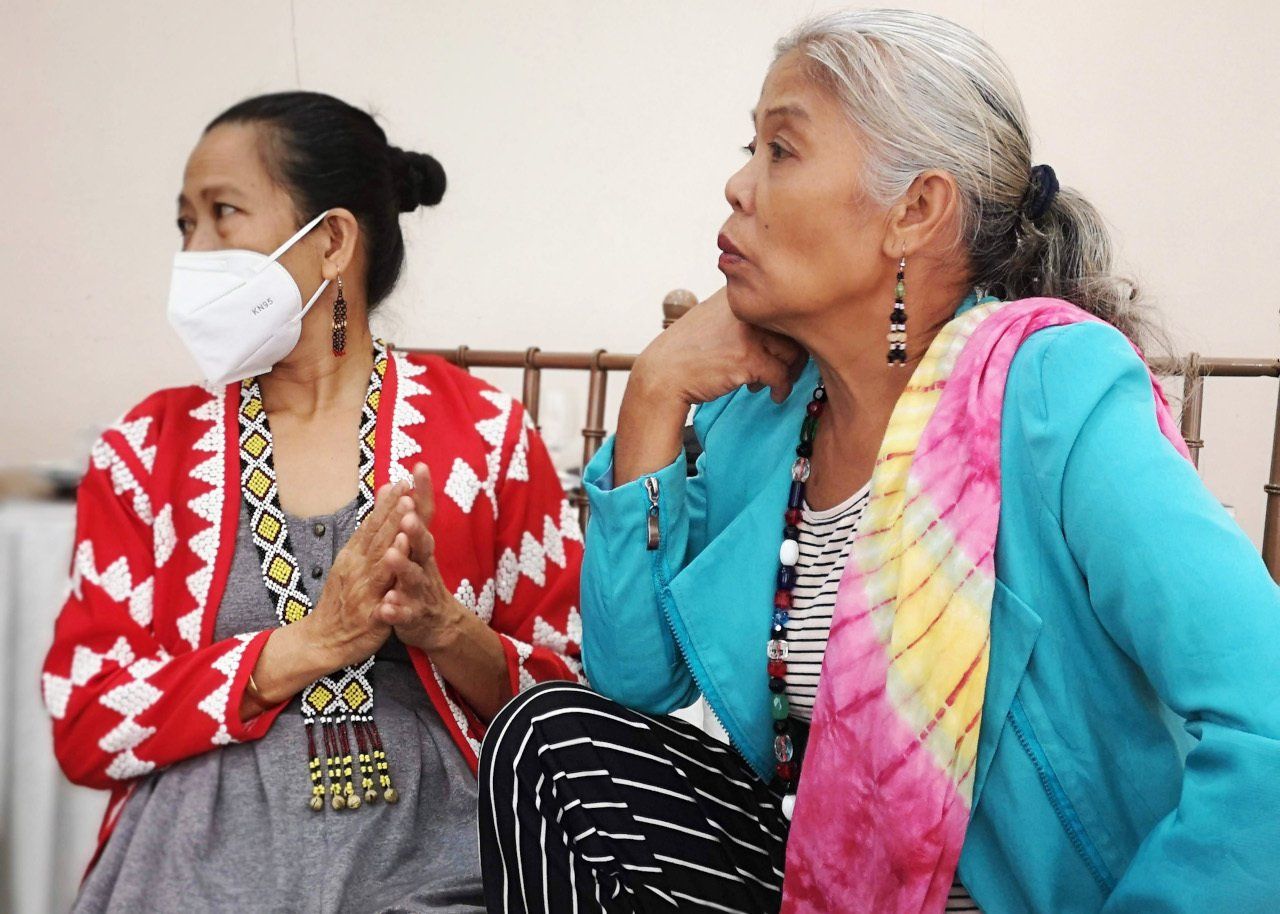

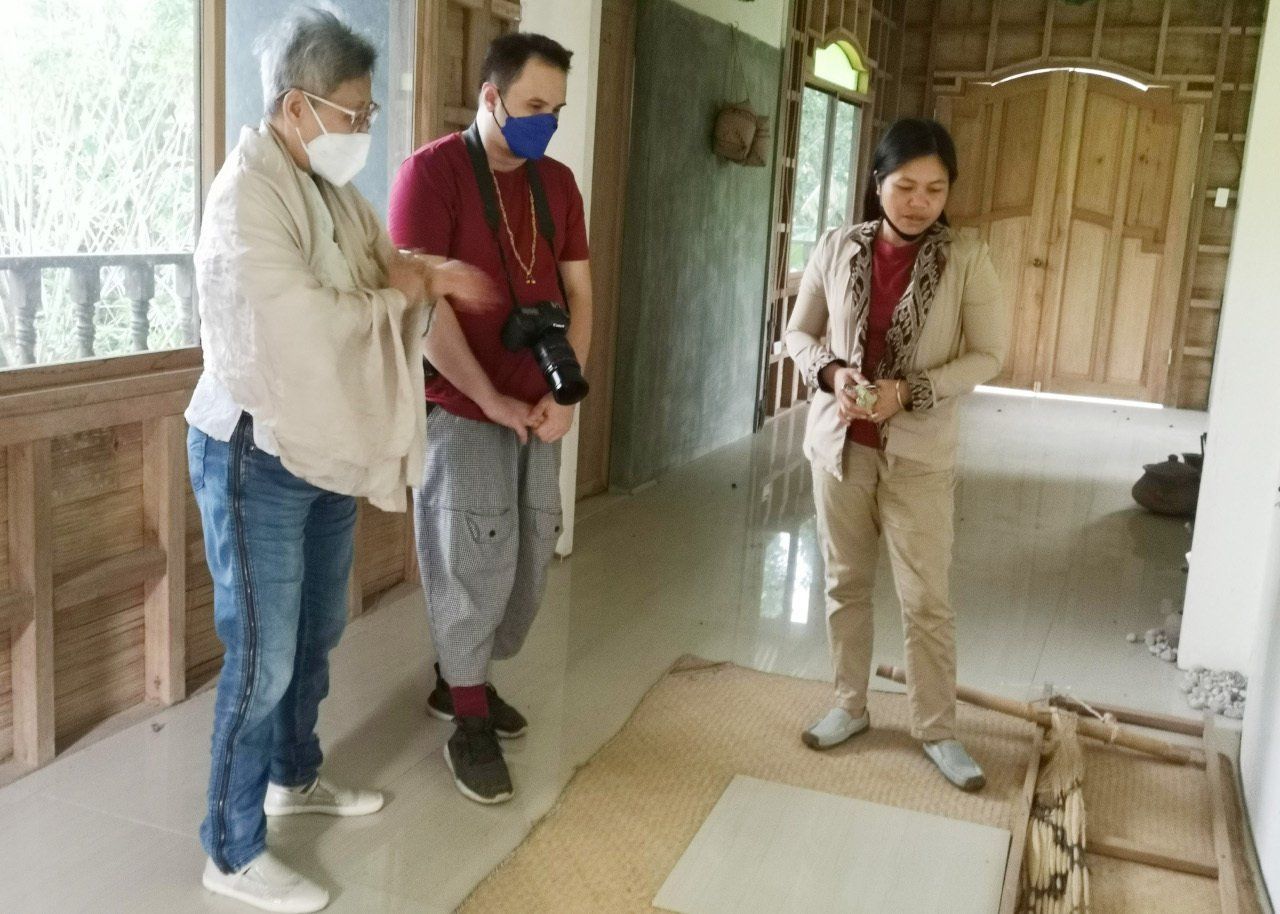
THE TBOLI WOMEN IN DIFFERENT WORKSHOPS WITH
THE EXHIBITION TEAM.
CURATOR MARIAN PASTOR (LEFT) AND PROJECT OFFICER
MARICEL P. HILARIO-PATIÑO (SECOND FROM LEFT) DURING A
MAPPING SESSION WITH THE TBOLI WOMEN.
RESEARCH PARTNER JENITA EKO (RIGHT) SHOWING ARTIST KARL CASTRO (CENTER) AND CURATOR MARIAN PASTOR ROCES (LEFT) A
WARPING FRAME USED IN MAKING TNALAK.
BY TACT, LEVITY, BRAVURA—AND MOST IMPORTANTLY, DISCRETION.
CONNER APAYAO
BALBALAN
BALENCIAGO MASS BASE
TOMIANGAN
NAPOCOR CAMP
NANENG MASS BASE
CAGALUAN MASS BASE
TANAP MASS BASE
MALUCUSOD MASS BASE
BASAO MASS BASE
BATONG BUHAY MASS BASE
MOUNT BINULUAN
HELD THE CORDILLERA
MASS PLENUM IN 1984
PLANNING OF SPLIT
MOUNT BINULUAN SIKUU'
MALLANGA
SUMADEL MASS BASE
PAY-ONG BANGAD
FULISONG BANGAD
BANGAD MASS BASE
TINGLAYAN
DANANAO MASS BASE.
MARKS BY JUANITA CHULSI AND
JUANITA D. CABABA
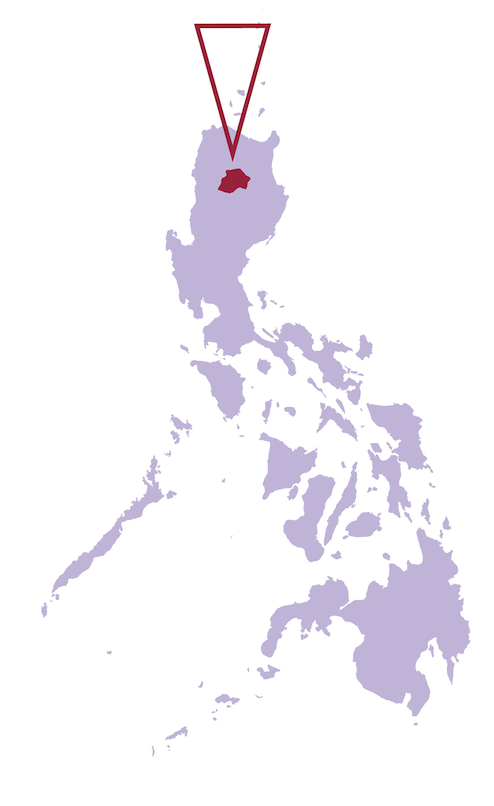
BITUAGAN
SADANGA
BELWANG MASS BASE
BUGNAY
BUGNAY GATE
MOUNTAIN BETWEEN
BASAO AND BUGNAY
BASAO
CHICO RIVER
NGIBAT
BUTBUT PROPER
LOCCONG
BUSCALAN
MOUNT CHUMANCHIL.
A
B
C
D
E
F
G
H
I
J
K
L
M
A
B
C
D
E
F
G
H
I
J
K
L
M
N
O
P
Q
R
S
T
MARKS BY TINA BALWEG,
CAROLYN GAMBOA AND
MANDING TAYAB
THIS MAP COLLECTS SPATIAL RECOLLECTIONS OF
NINE TBOLI WOMEN WHO WERE TAKEN UP IN
THE EVENTS THAT INVOLVED THE ESTABLISHMENT OF
THE PRESIDENTIAL ASSISTANT FOR NATIONAL MINORITIES
(PANAMIN) ON ONE HAND, AND ON THE OTHER, STA. CRUZ MISSION.
TWO ALPHA MALES HEADED EITHER ORGANIZATION
AND THE WOMEN WERE AMONG THOSE DIRECTLY IMPACTED
BY THE ACTIVITIES OF EITHER MAN AND ORGANIZATION.
THEIR EXPERIENCES INCLUDED THE SHIFT FROM TRADITIONAL
TO MUTATED POLYGAMY, THE TRANSITION TO THE CASH ECONOMY,
AND THE SHIFT FROM BILATERAL KINSHIP TO PATRIARCHY.

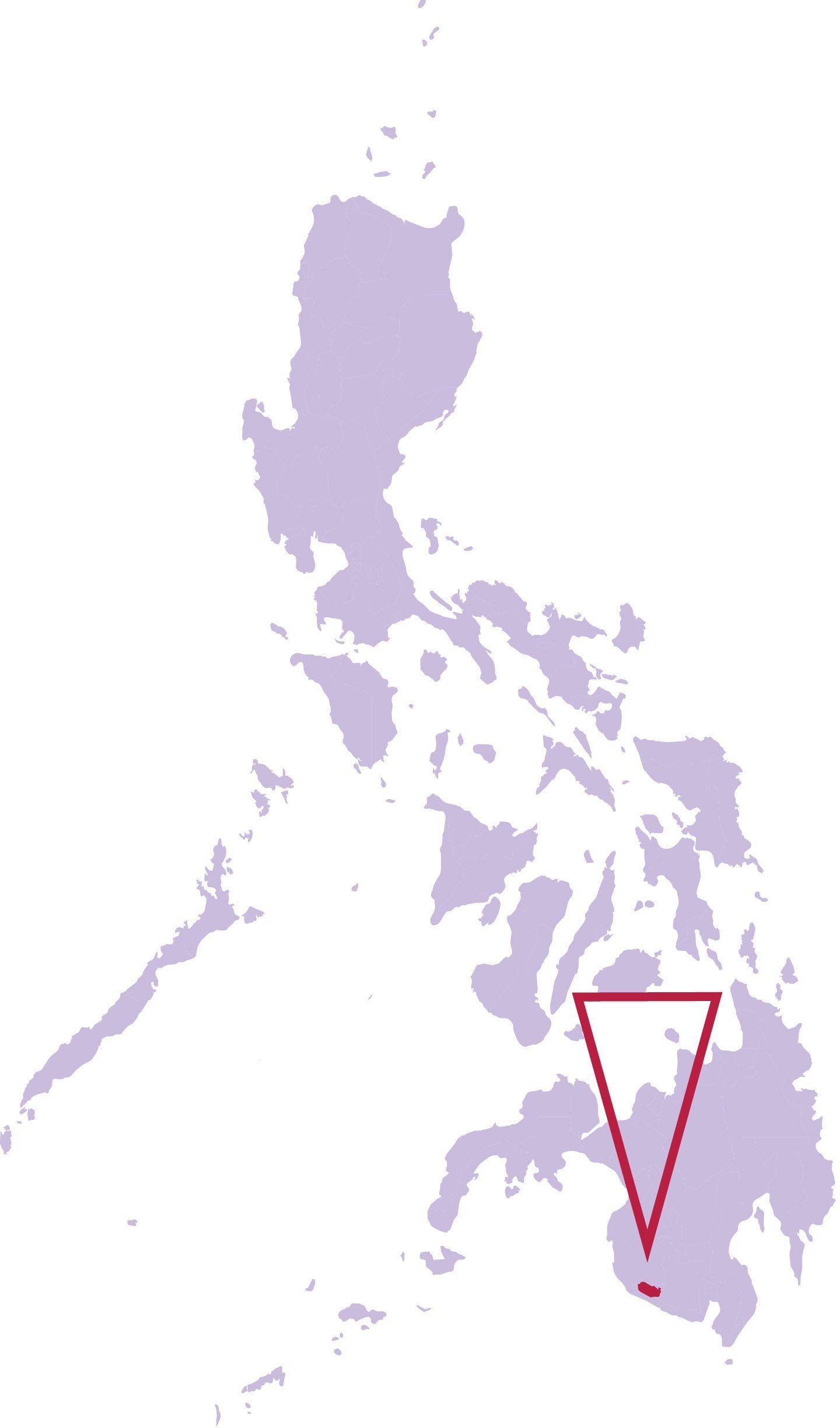
Lake Sebu
South Cotabato

Kalinga
Tnalak
Cloth
Warp ikat dyed
Musa textilis Nee
Private Collection
Tnalak is the generally used term
to refer to the warp ikat-dyed textile form
of the Tboli of what is now South Cotabato.
In the recollection and current telling
of the women's stories, the rare cloth
of Musa textilis represents the Lake Sebu
Tboli transition to the cash economy;
and hence the medium the women understand
as self-empowering. This specimen,
degraded by time, was woven during
the 1970s period when the tnalak entered
the cash economy. It belongs to the set of
experiences when Tboli women learned
to cope with the introduction of virulent patriarchy
into their formerly mobile swidden culture,
traditionally organized along the lines
of bilateral kinship.
Tnalak
Cloth
Warp ikat dyed
Musa textilis Nee
Private Collection
Tnalak is the generally used term
to refer to the warp ikat-dyed textile form
of the Tboli of what is now South Cotabato.
In the recollection and current telling
of the women's stories, the rare cloth
of Musa textilis represents the Lake Sebu
Tboli transition to the cash economy;
and hence the medium the women understand
as self-empowering. This specimen,
degraded by time, was woven during
the 1970s period when the tnalak entered
the cash economy. It belongs to the set of
experiences when Tboli women learned
to cope with the introduction of virulent patriarchy
into their formerly mobile swidden culture,
traditionally organized along the lines
of bilateral kinship.
All Rights Reserved | Weaving Women's Voices
